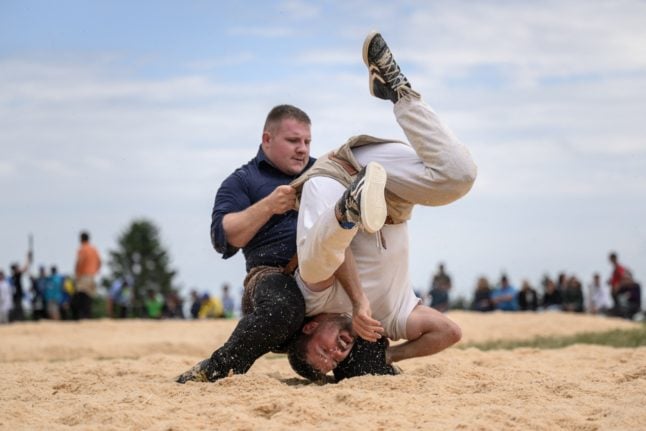What the 37-year-old Swiss speed specialist has been able to achieve in the latter stages of his career has been astonishing.
In March, he won the World Cup overall downhill championship title, marking the fourth time he has captured the crown (2011, 2010, 2008, 2007).
“I was pretty happy with last season,” Cuche said on Thursday. “It is still fun and a pleasure for me to ski and that is why I decided to continue.
“I feel comfortable right now even with the many hours of training I put in and the risks that come with our sport.”
Cuche’s pursuit of his third consecutive downhill title begins this weekend in the Canadian Rockies with the season opening FIS World Cup speed races.
The first men’s downhill race of the season is Saturday followed by the super-G race on Sunday.
Cuche ended last season ranked first in both downhill and super-G, finishing second in the overall rankings to Croatia’s Ivica Kostelic.
The 17-time World Cup race winner is now chasing Austrian legend Franz Klammer for the most downhill champion titles. Klammer has five with his last one coming in 1983.
“It would be a great success,” Cuche said of equalling Klammer’s record.
And in January last year, Cuche surpassed Austrian Michael Walchhofer to become the oldest downhill winner in the history of the World Cup, taking the Hahnenkamm in Kitzbühel at the age of 36 and 159 days.
The world’s elite men’s skiers head into Lake Louise after an almost five-week break, following the cancellation of the November 13th slalom in Levi, Finland due to a lack of snow.
Repeating as the Crystal Globe downhill champ will be no easy task for Cuche as he will face strong challenges this season from Norway’s Aksel Lund Svindal, Austria’s Klaus Kröll and Italians Christof Innerhofer and Werner Heel.
Among those missing is last year’s Lake Louise downhill winner Walchhofer, who retired in March after compiling 19 career World Cup victories in 13 seasons.
Race officials cancelled Wednesday’s first training run because of heavy snowfall and Thursday’s training was also pushed back two hours so workers could try and get the course ready.
“It used to be a glider’s course and thought of as an easy track. The last couple of years they’ve made it quite icy and bumpy and made it quite challenging to be fast on,” said Canadian skier Jan Hudec.
Kostelic is hoping to get back into a groove similar to the run of success he enjoyed late last season which propelled him to the World Cup overall title.
Kostelic won the overall title but then spent the off-season recovering from knee surgery. He said Thursday he feels fine and one of his goals this year is to better his results in the speed disciplines.
“Downhill and giant slalom are my worst disciplines so I would like to do better in both of those,” Kostelic said.
He said the five-week break between races was good for him because he wasn’t able to train in the off-season like he normally does.
“I missed a lot of training because I had my surgery in the spring. I made up some of my lost training time during the break,” Kostelic said.
Austrian skier Mario Scheiber, who finished second in the Lake Louise downhill last season, pulled out of the first downhill and super-G of the season on Thursday because of an injury.
Scheiber was due to return to competition in Lake Louise after fracturing his collar bone and nose in a training crash in January in Chamonix. But he injured himself last week training in Colorado.
The loss of Scheiber and Walchhofer means two of the top three finishers from last year’s Lake Louise downhill will not be back this season.
The men next travel to Beaver Creek, Colorado for three races, downhill, super-G and giant slalom.



 Please whitelist us to continue reading.
Please whitelist us to continue reading.
Member comments